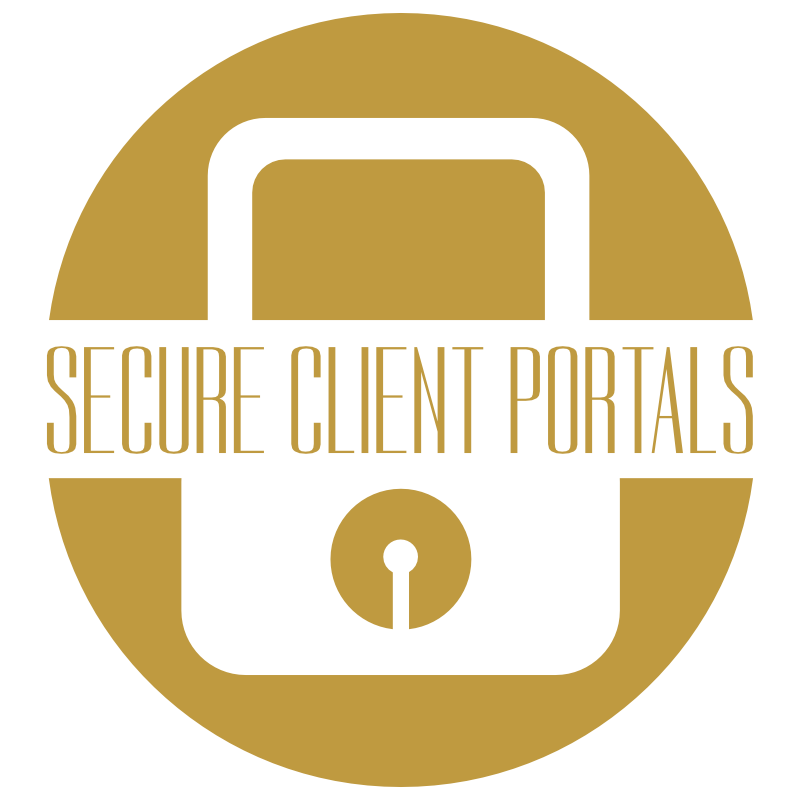Before we share any of our “five ways,” let’s get more basic. The best way to understand a “web portal” is to break down the term itself. A portal is defined as “a doorway, gate, or other entrance, especially a large and imposing one” (lexico.com). Now we have a starting point. A portal is, in essence, access. Let’s restrict the idea to the world of online communications. Now we are talking about a “web portal.” We go to Wikipedia for our definition there: “A web portal is a specially designed website that brings information from diverse sources, like emails, online forums, and search engines, together in a uniform way. Usually, each information source gets its dedicated area on the page for displaying information; often, the user can configure which ones to display.”
For our own practical purposes here, let’s define “web portal” as part of a business’s website where clients or customers can log in and access content or materials they need, or where they can upload or deliver content or materials they wish to share.
Anyone who uses the web for any length of time uses portals with some regularity. An ecommerce site is generally a portal. A paywindow site is generally a portal. Online banking generally is transacted on a portal. The bank might not use the word “portal” anywhere on its website, but still, that portion of its site is a web portal. Any restricted access portion of a website that requires a log-in is generally a portal.
Now, if you are considering adding a portal to your company’s own web capabilities, here are those five ways whereby you and your customers can benefit:
1 – Ease-of-use
According to research by Salesforce on customer expectations, “76% of consumers expect companies to understand their needs and expectations.” This goes beyond basic customer service and fair pricing. This takes you to proactive service, personal interaction, and connections across multiple channels.
Your client portal gives you a platform where you can easily guide your clients through step-by-step processes. To really help them understand the process, you can incorporate progress bars, automated notifications, and even SMS texting to keep them informed and encouraged along the way.
2 – Convenience
A growing number of consumers prefer to manage their data online. Increasingly people are migrating from paper to paper-less in their daily lives. Ultimately they are moving from paper to paperless for their business transactions and record-keeping as well. We see this in many of the common practices that we all use. For example, banking. Most people have made the move to online banking through the bank’s web portal. The same trend is evident in the way individuals pay bills through various online portals used by utilities and other service providers. Education is expanding its use of portals, as are law firms, healthcare providers, insurance agencies, photographers, architects, engineers, designers, and even the U.S. government.
3 – Instant Access
Akin to the benefit of convenience is the advantage of instant access to your services and processes. Instant access gratifies your client and streamlines your on-boarding efforts at the same time.
4 – Personalization
When more than three-fourths of the consumers say that customization is everything, having a portal for your company allows you to meet that customer expectation with a personalized online experience. Most are willing to pay more for the better experience.
5 – Faster Engagement
Enhance customer experience with the online live chat feature. Did you know that, according to J.D. Power, “live chat has become the leading digital contact method for online customers, as a staggering 42% of customers prefer live chat compared to just 23% for email, and 16% for social media or forums.”
According to CrazyEgg, 38% of consumers are more likely to buy from a company if they offer live chat support. Forrester noted that there was a 10% increase in the average order value when taking into account the sales from customers who engaged in a chat before making a purchase, as compared to those that did not use chat.
All of the features listed here may not fit your situation or benefit your clients. But chances are that more than one of these portal features will be an asset to your organization and an added convenience for those you serve. And that’s a plus.

